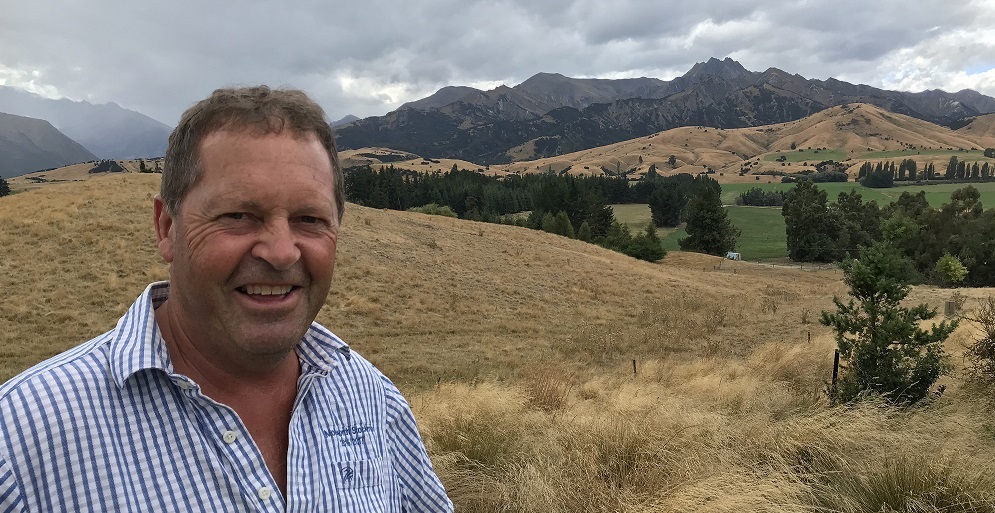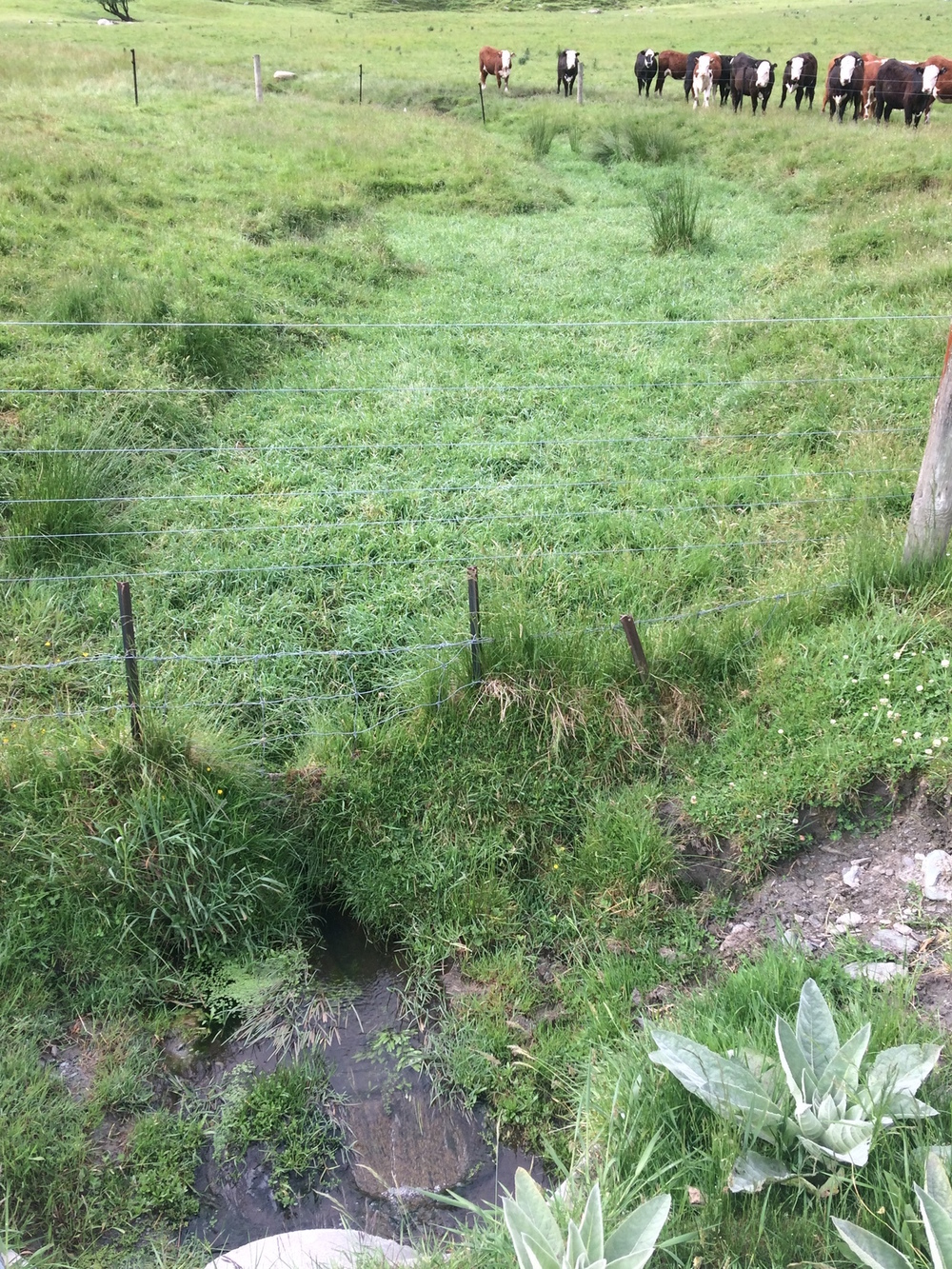Wanaka App long-form: Farmers’ group committed to water quality
Sue Wards
27 October 2019, 5:23 PM
 One outcome of the Wanaka Catchment Group’s farm plans is this wetland area reinstated on Mt Aspiring Station to intercept run-off from more intensively grazed and winter fodder crop paddocks. PHOTO: Supplied
One outcome of the Wanaka Catchment Group’s farm plans is this wetland area reinstated on Mt Aspiring Station to intercept run-off from more intensively grazed and winter fodder crop paddocks. PHOTO: SuppliedFarmers are increasingly in the firing line from the public for contributing to environmental degradation, but behind the scenes Lake Wanaka catchment farmers have been working together to improve the quality of the water flowing from their properties into the lake.
For the past two years, members of the Wanaka Catchment Group (a voluntary group from farms larger than 50 hectares) have been collaborating to adopt consistent tools and sustainable approaches to environmental management, with a goal to help protect the water quality in Lake Wanaka.
“We generally think the overall water quality coming off our farms is pretty good, but we know every single farm has areas which could be improved,” Randall Aspinall, of Mt Aspiring Station, told the Wanaka App.
“We’re trying to educate, support and motivate each other to make those changes that are actually going to improve water quality. It’s a long term commitment of time and money.”
The group was formed after the Otago Regional Council’s (ORC) mediation process for water quality Plan Change 6A revealed that, while the quality of the water flowing into Lake Wanaka was already very good, there were many research unknowns and opportunities for improvements.
With the assistance of environmental management consultancy Aspiring Environmental, the group has succeeded in getting 90 per cent of the farmed catchment managed under one consistent environment planning approach.

Chris Arbuckle PHOTO: Supplied
The development of a common framework for environmental management across farms in the catchment became a possibility after a project funded by Beef & Lamb NZ was delivered by Chris Arbuckle (of Aspiring Environmental). The project initially involved three high country stations: Mt Burke, Mt Aspiring and Rees Valley. Grant Ruddenklau, who manages Mt Burke Station, saw the potential and set up the catchment group with Randall, supported by Chris.
The group’s original goal was to ensure farm plans were implemented, and Randall said that has been achieved for 12 of the 17 farms in the catchment. “Fifteen have expressed an interest, and 12 are progressing well,” he said, while another is following an alternative process.
Chris has been contracted to deliver detailed Land Environment Plans for each farm, which identify “at risk" areas; as well as a response plan and timetable for identified issues; a budget to optimise nutrient use; and assistance with reporting requirements to government.
“The first issue we struggle with in this catchment is a lack of information,” Randall said. There’s enough data out there to say we’re better than many catchments in New Zealand, he said, but while there’s no evidence that water quality is declining (invasive species aside) there’s not enough information to be certain.

Grant Ruddenklau PHOTO: Wanaka App
The farmers in the group hope to do more work with the ORC relating what the research reveals to the actual impact on our rivers and lakes, Randall said.
In Randall’s nine years managing his family’s farm, he’s seen “huge changes” in farmers’ awareness of environmental issues, and believes that “day-to-day changes can make a significant difference”.
“A lot of what we’re trying to do is help the farmers in the group understand the choices they make on farms impact the environment, and sometimes a relatively easy choice can bring benefits; and to identify the areas on the farm that are more at risk.”
Randall said examples might include fencing off sensitive areas such as wetlands from cattle; ensuring fencing is at least two to three metres away from waterways; looking at fertiliser use; and discussing what paddocks are best cropped.
This last issue has been under the public spotlight this winter as a national campaign against winter crop grazing has used images of farming practices, including from Mt Albert Station in the Wanaka catchment and Hunter Valley Station in Hawea catchment, on social media. (For the record, ORC investigations of both properties found the farmers had acted adequately to protect the waterways, and no traces of sediment or effluent were found running directly into the lakes.)
The ‘name and shame’ campaign is at complete odds with Chris’ approach of working closely with farmers to identify areas to be improved upon.
“The farmers I am working with are all open to a frank discussion on how to improve the management of activities like winter grazing. Prior to the catchment group forming I noted a number of situations that needed remediation. In recent times, I’ve seen a big step in the right direction,” he said. “Winter grazing is a key focus for farm plans and it’s important we improve management. It’s a critical component of farm management in high country farm systems.”
Randall said the online campaign has taken a toll on farmers, who can be vilified on social media, with no way to “explain the full story behind the snapshot and slant presented online”.
“I’ve seen big improvements on the farms I work on but that’s not to say there isn't still room to improve,” Chris said. “Today’s good practice is tomorrow’s poor practice. Discussing how best to improve with the help of experts using local, on-farm examples is far more effective within a trusted and open peer environment like the Wanaka Catchment Group, rather than dropping a random photo in front of them and saying ‘stop it’.”

An example of a waterway farmers could fence off as a filter area. PHOTO: Supplied
The catchment group’s work may help: it hopes to build a better understanding with the community around important environmental issues and what can be done to manage them.
Local riparian initiatives are also assisted by the Wanaka Water Project, a community-led effort to help maintain and improve the quality of our waterways, which includes the goal to plant some 24,000 trees around Wanaka waterways over the next five years, with the help of Wanaka community nursery Te Kakano. Plantings are already planned for four farms in the Lake Wanaka catchment as well as four more in the wider Upper Clutha area, Randall said.
Some of the information collected through the catchment group will also help inform discussions with the ORC, Beef & Lamb NZ, Government departments, research organisations and local interest groups.
Other farmers’ groups for the Lake Hawea and Luggate Creek catchments are also under development, and the Cardrona Landcare group has been active for a number of years.


